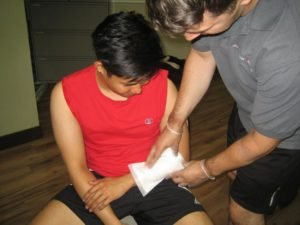Rabies is considered as a disease that can affect the central nervous system of animals. In severe cases, it can lead to the inflammation of the brain. The moment rabies reaches the brain and spinal cord, vaccinations or treatment options will no longer work. Always remember that rabies will take within 10 days from the initial contact to reach the brain and spinal cord. During this short time frame, the condition can still be treated with medications and injections.
Early signs of rabies
The early signs of rabies include headache, high fever, irritability, confusion and oftentimes pain or itchiness at the site of the bite. Take note that rabies is usually transmitted via a bite or contact with the saliva or brain tissue of the infected animal. The time between exposure and manifestation of the symptoms is usually 2-12 weeks but it can vary from one individual to another. Individuals who are infected and not treated right away will eventually become restless, excited and confused. Additionally, bizarre behavior can be observed that is accompanied by insomnia and hallucinations.
What happens during the middle stage of rabies?

Once the disease progresses and affects the brain, there is increased salivation along with the bizarre behavior. Spasms on the larynx and throat will also start to manifest as the part of the brain that controls them is under attack. These spasms can cause a lot of pain while speaking, swallowing and breathing can also be affected. If an individual attempts to swallow water, it can trigger these effects despite the severe thirst.
What are the advanced symptoms of rabies?
The late symptoms of rabies include spasms of the throat muscles, paralysis, convulsions and delirium. The agitation and confusion will steadily progress in the later stages of the disease. In no time, coma and death can result. The cause of death can range from seizures, blockage of the airways, exhaustion and widespread paralysis. Take note that paralysis typically starts in the affected limb and radiates throughout the body as the diseases becomes more prominent. The treatment for individuals under this stage of the disease is mainly focused on keeping them comfortable as possible since there are no other possible options.
Managing dog bites
If an individual sustains a bite from a dog, the initial first aid measure is to clean the bite site using warm water and soap. This will help eliminate the bacteria and saliva as much as possible. You should try to scrub the affected area for at least two minutes. Even though it can hurt, it can help minimize the risk for infection. Once the affected area has been thoroughly rinsed, you have to apply a skin disinfectant in order to kill off any remaining bacteria. Cover the wound and bring the individual to a doctor or emergency department at the nearest hospital for further treatment.
